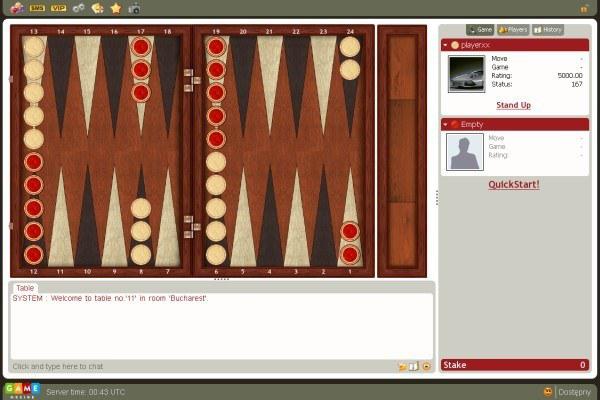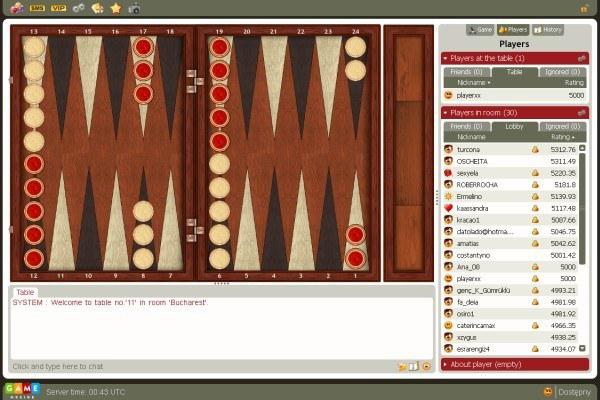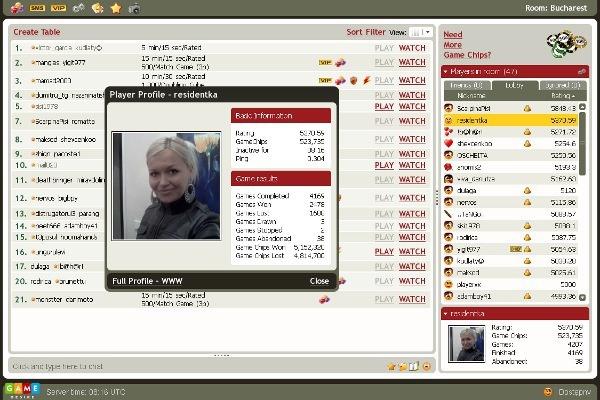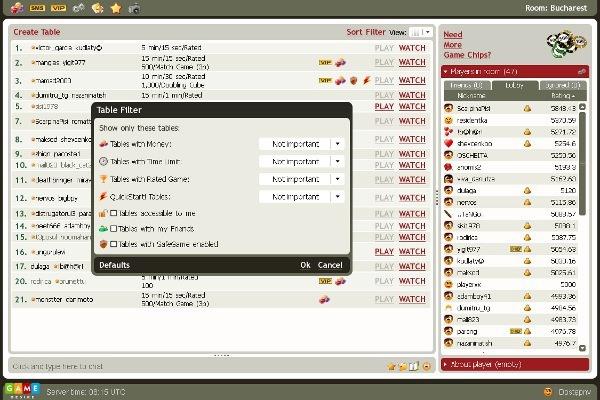A játék menete Backgammon - játékszabályok
Game rules
The game is played on a board consisting of four quadrants with six elongated triangles of two opposing colors marked on each of them, which are known as 24 points. Each player is given 15 identical checkers (yellow and green), also two dices are used for the game.

Points numbered 1-6 are called the inner board for the player using yellow checkers and points numbered 19-24 - the inner board for the player using green checkers. In the middle of the board there is a narrow vertical area called a bar, where the checkers that are hit during the game are placed. Players move on the board in opposite directions, i.e. the player with yellow checkers moves from point 24 towards the point 1 and the player with green checkers otherwise.
The game objective is to place all the checkers in one's own inner board and bearing them off. The player who does so first is the winner.
Gameplay
The game starts with each player rolling one die. The player who rolls a higher number of points moves first and starts the game. The first player clicks on the board and rolls two dice. Then, he or she moves his or her checkers on the board according to the numbers presented on the dice.
The move can be performed with one checker by the sum of numbers on both dice or any two checkers can be moved.
The checker moved can be placed only on:
- a vacant point, unoccupied by any other checker,
- a point occupied by other checkers belonging to the player performing the move,
- a point occupied by the opponent's checker (then the checker is hit).
It is impossible to perform a move on a point occupied by two or more checkers belonging to the opponent. The point is blocked.
A player is obliged to perform a move in accordance with the number of points on both dice. If it is possible to perform one move only, the other checkers are in such a position that they cannot be moved, a player has no second move. If both moves are blocked, a player misses the turn.
A player who rolls doubles, i.e. the same number of points on both dice, he or she is authorized to make four moves in accordance with the number of points on one die. It means that rolling a pair of sixes a player can make four moves by six spaces.
A single checker on a point is called a blot and it can be hit by the opponent. When a player's checker lands on a point occupied by a single checker belonging to the opponent, the opponent's checker is hit and placed on the bar.
After the checker has been hit, the opponent is obliged to bring it back into the play in his or her first move. The hit checker is moved into the opponent's inner table, according to the dice roll (for the white checker player - onto points 1-6, for the red checker player - onto points 19-24). If the points are blocked by the opponent's checkers, a move cannot be performed; it is necessary to wait until any point in the inner table is vacant or until the number of points which is rolled on dice allows to place a checker on a vacancy in the inner table.
When the player moves all his or her checkers in his or her inner table, he or she is allowed to start bearing off the checkers. Bearing off is also in accordance with the number of points on the dice rolled. In case of the number of points being higher than the number of checker moves to be performed, the checker is born off the point situated the furthest.
If a checker happens to be hit by the opponent while bearing off, it is possible to continue bearing off after that particular checker was brought into the inner table.
Game over
The game is won by the player who bears all his or her checkers off the board first.
The game is won by:
1 point when the opponent manages to bear off at least one of his or her checkers;
2 points when the opponent does not bear off any of his or her checkers (so-called gammon),
3 points when the opponent does not bear off any of his or her checkers and has at least one checker in the opponent's inner table or hit on the bar (so-called backgammon).
Additional rules
In case of a parlor game the options do not apply. Only if the match option is selected, it is possible to use the following game options:
A game using the doubling cube (contra) - the player who has the advantage can suggest doubling the result. If the opponent accepts the contra, the result will be doubled. The player accepting the doubling is allowed to suggest another doubling, so-called re. Other suggestions of doubling may lead to multiplying the result 64 times.
Using the Crawford rule in the game means that if the match is played up to the specific number of points and the opponent lacks only 1 point, he or she is not allowed to use the doubling cube in the next game.
The Jacoby rule allows gammons and backgammons to count for their respective double and triple values only if the cube has already been offered and accepted. This encourages a player with a large lead to double, possibly ending the game, rather than to play it to conclusion hoping for a gammon or backgammon.





